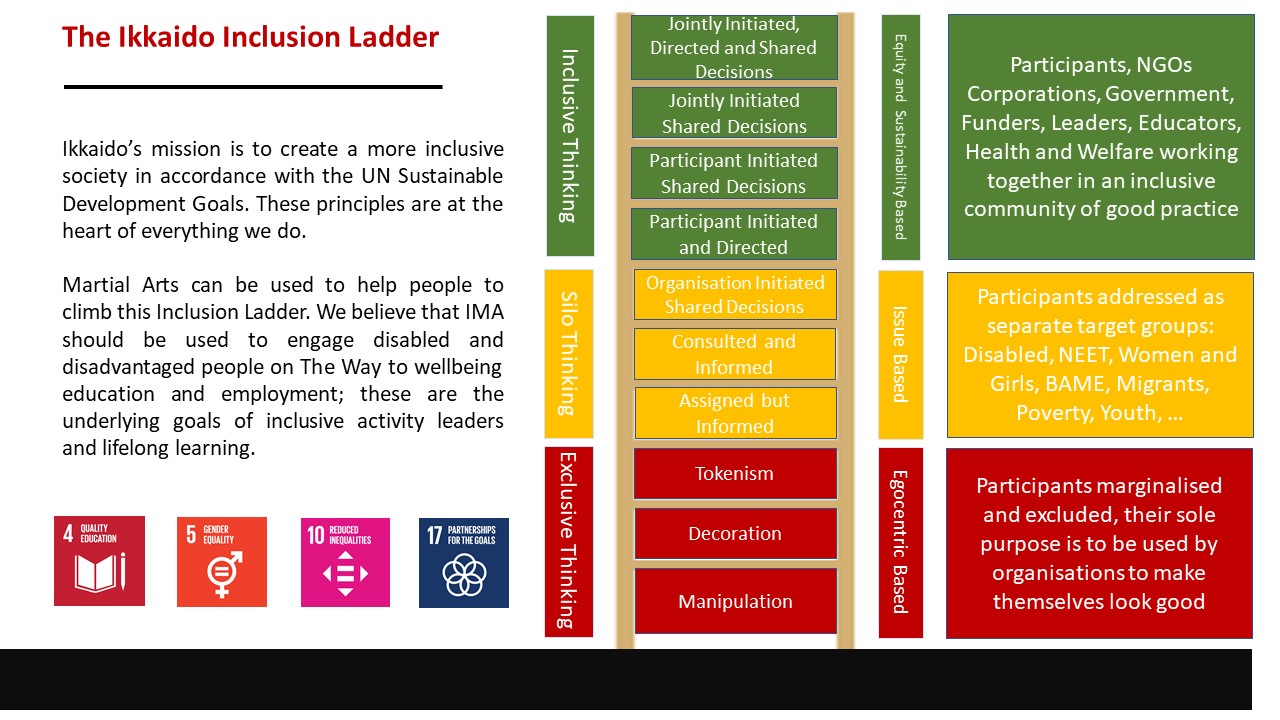Inclusion
By Ray Sweeney
Ikkaido’s Inclusion Ladder shows that the lower levels of inclusion are where people are treated as a target group for inclusion. This is the level where sessions of physical activity are run for people with a learning disability. This is actually exclusion and ghettoisation. Think, would you run a special session for just white people?
At this lower level, a wheelchair user might be used by an organisation because they have an obvious disability. They make the coach or organisation look good in a photo. This is the level where women, people of colour and with obvious visible disabilities are used as decoration.
At the bottom of the ladder people are tokenised. This is where people say things like, “Actually we have a disabled person in our club already.” This separates people rather than includes them. It is egocentric and exclusive.
At the next level, Silo Thinking categorises people into target groups. The focus is on the issue, rather than the person. People are a group to be “done to” rather than included. It is the non-disabled person who coaches the disabled person and not the other way round. When it is issue based it is a rarely the target group that leads the activity, and who is it that knows the most about the barriers they face?
The top level shows increasingly inclusive good practice. It is not just about including people in the decision-making process or planning of activities. At the topmost level, it is where people are treated as people and not just a target group. This is systems thinking where a group of people with different lived experiences show that they are part of a diverse and caring community. This is how we drive social change through inclusion at Ikkaido.




